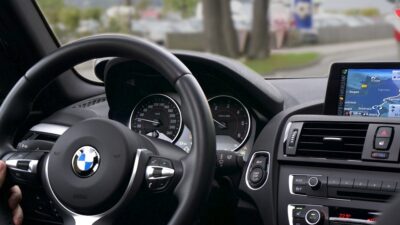The advent of autonomous vehicles (AVs) represents one of the most transformative shifts in transportation technology in modern history. With companies like Tesla, Waymo, and others at the forefront of this innovation, the potential benefits and challenges of AVs are becoming clearer. While promises of increased safety, reduced traffic congestion, and environmental sustainability abound, the implications for employment and the economy also warrant careful consideration.
Employment Dynamics
Job Displacement
One of the most pressing concerns regarding the rise of AVs is the potential for job displacement. According to studies, millions of jobs in the transportation sector—especially truck drivers, taxi drivers, and delivery personnel—are at risk. The American Trucking Associations reports that there are approximately 3.5 million truck drivers in the U.S. alone. As AV technology matures, these roles may diminish, leading to significant unemployment in sectors that rely heavily on human drivers.
Job Creation
While the fear of job loss is valid, it’s essential to recognize that AV technology will also create new jobs. The design, manufacturing, and maintenance of AVs will require skilled labor. Roles in software development, data analysis, cybersecurity, and fleet management are expected to emerge, offering opportunities for those who adapt. The shift to autonomous technology may lead to a net gain in employment as economies evolve.
Reskilling the Workforce
To address the impending job displacement, reskilling and upskilling will be crucial. Training programs must be established to help workers transition from traditional driving roles to new careers in tech-focused industries. Policymakers, businesses, and educational institutions must collaborate to create effective retraining initiatives that prepare the current workforce for the demands of an automated future.
Economic Implications
Increased Efficiency
The economic impact of AVs extends beyond employment, with the potential for increased efficiency in transportation. By optimizing route planning, reducing traffic congestion, and minimizing accidents, AVs can enhance productivity. This efficiency can lead to reduced operating costs for businesses, potentially lowering consumer prices and stimulating economic growth.
Changes in Urban Planning
The rise of AVs may also reshape urban landscapes. With the potential for shared AVs to reduce the need for parking spaces, city planners might rethink infrastructure design. This could free up land for green spaces, residential developments, or mixed-use facilities—contributing to enhanced urban living while increasing the appeal of cities for residents and businesses alike.
Impact on Insurance and Healthcare
The AV revolution will also disrupt industries such as insurance and healthcare. As the number of accidents decreases, insurance models may need to be re-evaluated. Fewer accidents could mean lower premiums, altering the profitability landscape for insurance companies. Additionally, a reduction in traffic injuries could lessen the burden on healthcare systems, freeing up resources for other vital areas.
Regulatory and Ethical Considerations
As AVs become integrated into daily life, regulatory frameworks will need to evolve. Crafting legislation that addresses liability, safety standards, and data privacy will be crucial. Moreover, ethical considerations surrounding decision-making algorithms in AVs present challenges that society must navigate, especially concerning accident scenarios and accountability.
Conclusion
The impact of autonomous vehicles on employment and the economy is multifaceted and complex. While the risk of job displacement is a genuine concern, the potential for new job creation and economic efficiency cannot be overlooked. By preparing the workforce through reskilling, establishing supportive regulatory frameworks, and fostering innovation, society can harness the benefits of AV technology while mitigating its challenges. In this pivotal moment, proactive strategies will be essential for navigating the future of work and economic development in a world increasingly influenced by autonomous vehicles.



